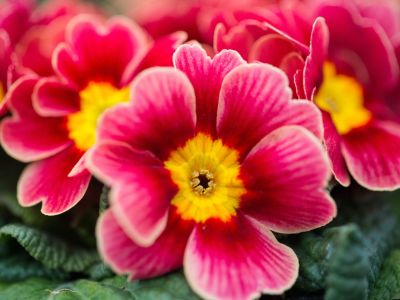Blooming often lasts throughout summer and in some areas, they will continue to delight the fall season with their outstanding colors. Most primrose flowers seen in gardens are Polyanthus hybrids, which range in color from white, cream and yellow to orange, red and pink. There are also purple and blue primrose flowers. These perennial plants prefer damp, woodland-like conditions.
Growing Primrose Plants
Growing primrose is easy, as these plants are quite hardy and adaptable. You can find primrose perennials at most garden centers and nurseries. Look for primroses that are healthy in appearance, preferably with unopened buds. Primroses can also be grown from seeds with an equal mixture of soil, sand and peat moss. This can be done indoors or out depending on the time of year and the climate in your area. Generally, seeds are sown indoors (outdoors in cold frame) during winter. Once seedlings have obtained their second or third leaves, they can be transplanted into the garden. Cuttings can also be taken from some varieties during summer.
Primrose Care
Primrose perennials should be planted in lightly shaded areas with well-drained soil, preferably amended with organic matter. Set primrose plants about 6 to 12 inches (15-30 cm.) apart and 4 to 6 inches (10-15 cm.) deep. Water thoroughly after planting. Add a layer of mulch around the plants to help retain moisture. Continue to give your primroses thorough watering throughout the summer months, about once a week or more during periods of drought, but let off once fall approaches. The primrose flower also appreciates light applications of organic fertilizer throughout the growing season. Keep primrose plants looking their best with regular pruning of dead leaves and spent blooms. If you want to collect the seeds of your primroses, wait until late summer or early fall before taking them. Store them in a cool, dry place until the following planting season or sow them in a cold frame.
Problems with Primrose Perennials
Slugs and snails are common pests affecting primrose plants. These can be controlled with non-toxic slug bait placed around the garden. Spider mites and aphids may also attack primroses but can be sprayed with soapy water. If primrose plants are not getting enough drainage, they may also be prone to crown rot and root rot. This can be easily fixed by amending the soil with compost or relocating the plants to a well-drained site. Too much moisture can also make the primrose flower susceptible to fungal infections. This can often be prevented by using good watering habits and adequate spacing between plants. Growing primroses is easy when given the proper growing conditions and following primrose care guidelines.
